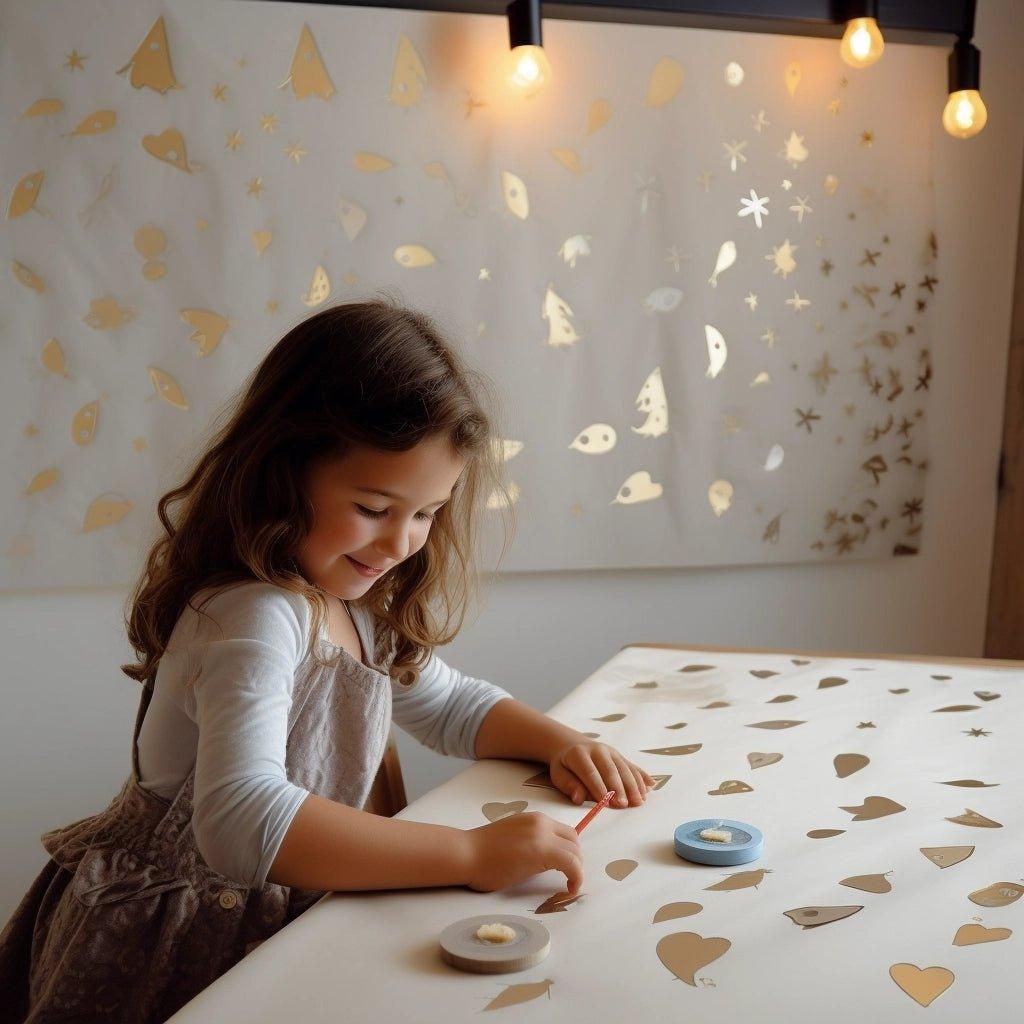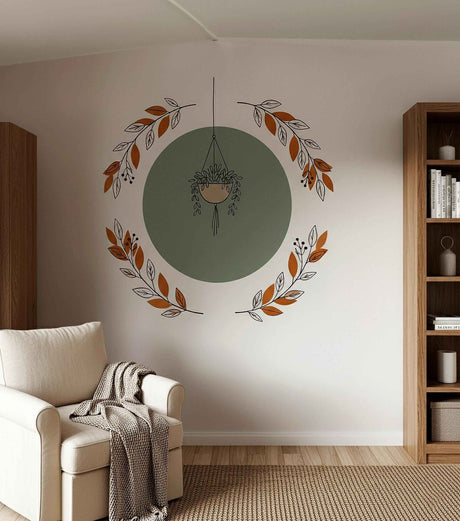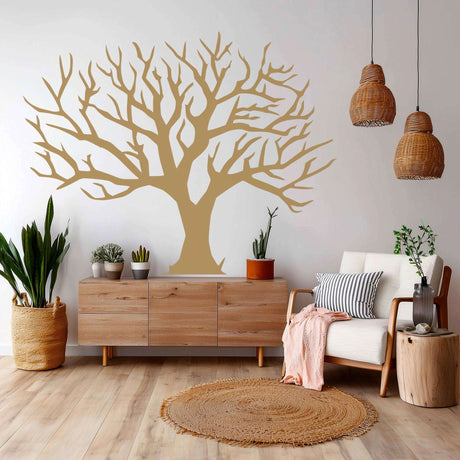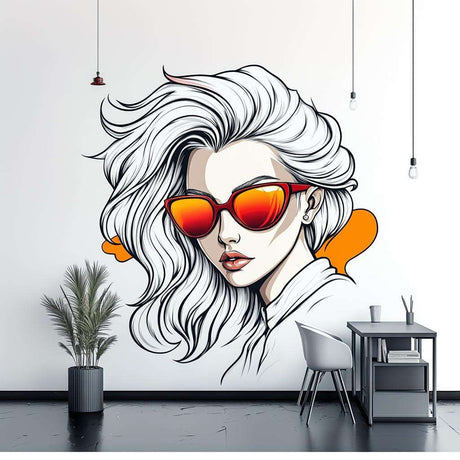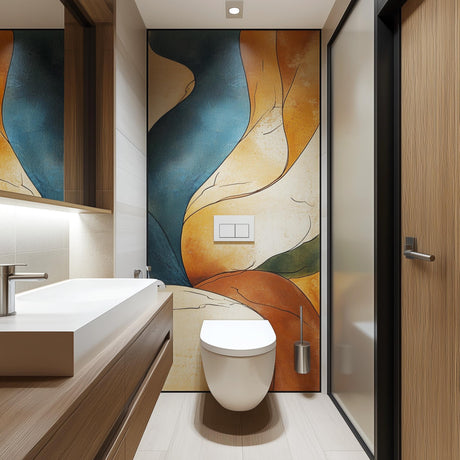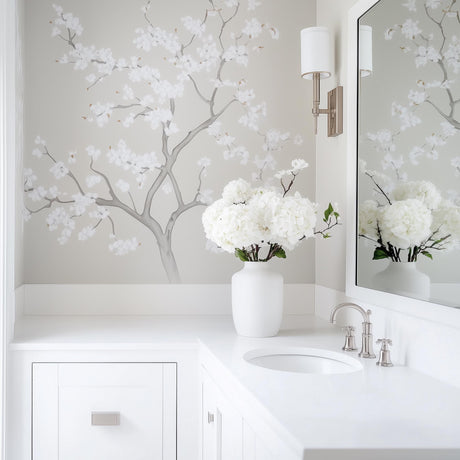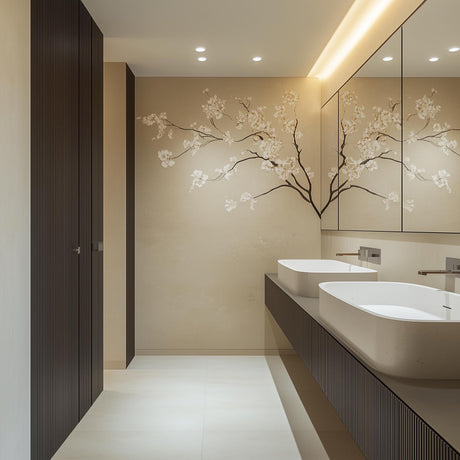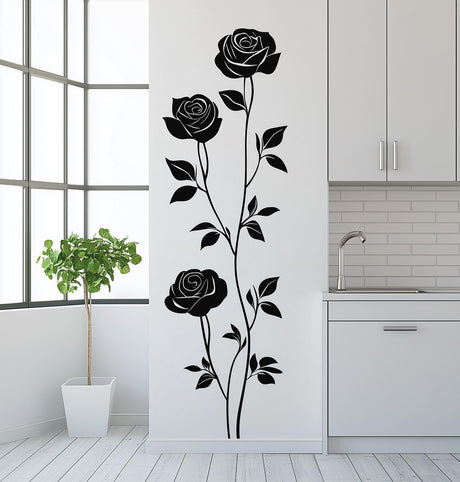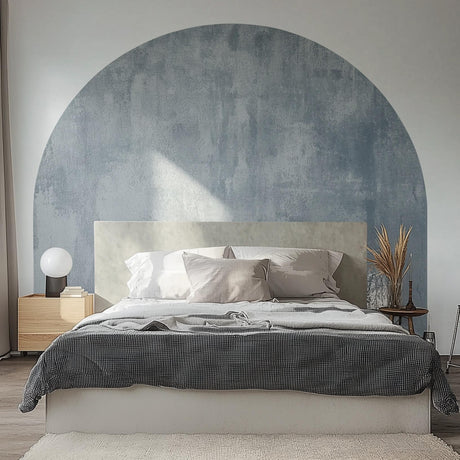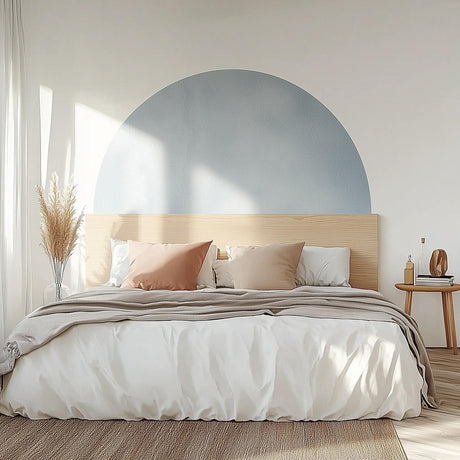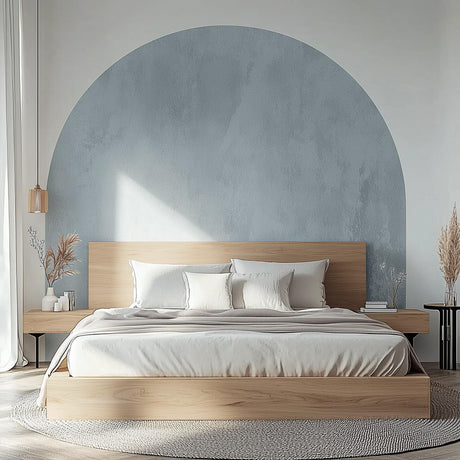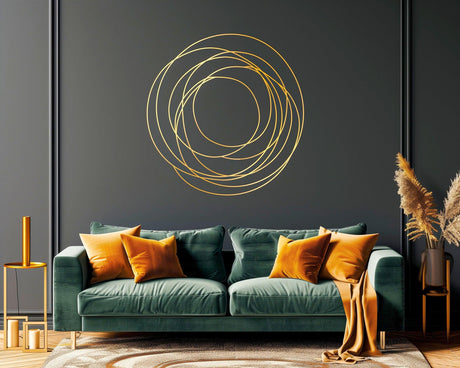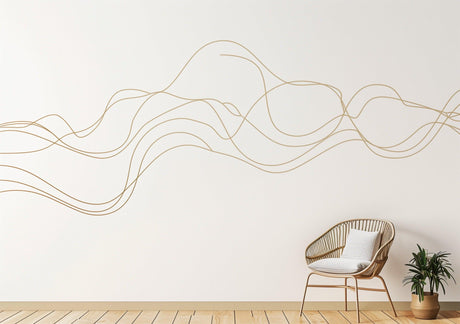A craft room is not just a corner with a table. It is a working tool. If the walls are empty or cluttered, projects take longer, ideas get lost, and materials disappear at the worst moment. Craft room wall decor helps turn chaos into a clear, controlled workspace. It creates places for planning, inspiration, and storage without adding heavy furniture or shelves. With the right decals and wall art, the room becomes faster to use, easier to maintain, and more motivating to return to.
Flat wall decor works better than bulky storage because it stays out of the way. You can build visual layers directly on the wall: inspirational images, workflow prompts, material samples, schedules, and task lists. Craft room wall art lets you update your setup whenever your creative medium changes whether you move from paper to fabric, from acrylic to resin, or from cardmaking to laser cutting. The walls adapt with you instead of locking you into one layout.
How can craft room wall decor make your workspace more productive?
Craft room wall decor directly affects productivity. When your walls do not support your process, you constantly hold small tasks, measurements, and reminders in your head. When the walls carry part of that load, the brain is freed from unnecessary decisions. This keeps you in a creative flow without friction.
Well-planned walls solve three issues. The first is navigation: you instantly see where fabrics, paper, paints, and tools belong. The second is project visibility: active tasks, upcoming deadlines, and paused ideas stay in front of you instead of disappearing in drawers. The third is motivation: high-quality craft room wall art helps return to work on days when inspiration is low.
A practical layout is simple. The wall above the main table becomes the “control center.” One block holds your weekly schedule. Another holds material samples you need often. A third acts as inspiration space for sketches, references, or finished pieces. You do not need wood frames or cork boards. Decals create the structure: boxes, grids, labels, arrows. You fill these spaces with your content.
Craft room wall decor becomes part of the workflow. If you sew, place sewing guides, seam allowance charts, or needle types on your working wall. If you do paper crafts, place fold patterns, format charts, adhesive recommendations, or cutting guidelines. When essential references are always in your line of sight, projects go faster and mistakes happen less.
How to plan craft room wall art for storage, inspiration, and work zones?
Craft room wall art works best when the room is divided into clear zones instead of randomly decorated areas. The wall must support how you actually work, not how the room looks in photos. Start by observing your movements: where you cut, where you assemble, where you varnish or glue, where you photograph products, and where you package orders.
The main wall above your desk should contain the information you consult most: process maps, reminders, small charts, and reusable label areas. A nearby side wall is better suited for inspiration photos, printed reviews, sketches of future projects, favorite color palettes. All of this counts as craft room wall art when placed intentionally rather than scattered.
To avoid a messy collage, use a simple system:
- define 2–3 functional wall zones
- give each zone its own shape (vertical blocks, grid layout, or wide horizontal strips)
- separate inspiration and workflow references so they do not compete
- keep the palette limited to two or three colors to reduce visual fatigue
Once the structure is defined, choosing specific elements becomes easier. Some areas need bold text and clear labels, some need soft accents or decorative outlines, and some need frames that let you attach temporary cards or samples. The key is building a wall system that supports decisions rather than distracts from them.
A well-planned craft room wall art system acts like a dashboard. You see deadlines, progress, resource needs, and creative possibilities at a glance. This setup works for every medium scrapbooking, resin art, sewing, woodworking, hand lettering, or miniature crafting.
Which craft room wall decals work best for renters, hobby rooms, and studios?
Craft room wall decals are ideal for renters, hobbyists, and small studios because they combine flexibility and structure. Renters in the US, Estonia, and Germany need removable films that do not damage paint or plaster. Home-based creators need layouts they can rearrange after moving furniture. Small commercial studios need fast transformations to reflect new product lines or seasonal demand.
The most useful craft room wall decals fall into three categories. The first includes outline decals with labels or icons “tools,” “paper,” “fabric,” “orders,” “ideas.” These organize the workspace visually. The second category includes frames, boxes, and grids that let you attach temporary cards and samples. The third includes larger themed compositions that define the room’s identity: sewing motifs, botanical art, geometric layouts, or minimal line-based shapes.
Your choice depends on your workflow. If you reorganize often, choose neutral shapes, clean lines, and calm colors so the craft room decals stay relevant even when the room changes. If you run a brand, extend your visual identity to the wall colors, icons, lettering, or signature motifs. This makes the workspace feel cohesive and professional.
Renters should follow simple rules:
- choose removable film labeled "peel and stick"
- test decals on a small area first
- avoid fragile old wallpaper and unstable plaster
- do not cover active cracks or expanding defects
With the right selection, craft room wall decals turn walls into a working system without permanent commitment. You can remove or reposition them at any time without damaging the surface.
How to install and rearrange craft room decals without damaging walls?
Installing craft room wall decals is simple but benefits from planning. If you apply them randomly, the layout will become unbalanced and you will want to redo everything. Good planning ensures that your wall supports your workflow from the first day.
Begin with a paper sketch. Map your wall, windows, sockets, and shelves. Define the zones: work, inspiration, storage, photography. Use painter’s tape to outline the future layout directly on the wall. This step saves hours of rearranging later.
When installing decals, work from the top down and from the center outward. Clean the wall with a dry cloth to remove dust. Avoid installing on fresh paint; let it cure fully to avoid peeling paint during removal.
A simple installation checklist:
- verify the height of elements both sitting and standing
- mark block borders with painter’s tape
- clean and dry the wall
- apply large decals first, then smaller ones
- photograph the final layout for future reference
When rearranging, move entire blocks instead of individual pieces. This keeps the visual structure intact. When removing decals, warm them gently with a hair dryer on low and peel at a low angle. This prevents damage to paint or plaster. Proper installation and removal ensure that the wall stays clean and ready for the next creative phase.
How to choose craft room wall decor that works in US and European homes?
Craft rooms in the US and Europe differ, but well-chosen craft room wall decor works in both. American homes often use drywall, built-in shelving, and wide open rooms. European homes especially in Germany and Estonia often feature plaster, narrow layouts, window niches, and limited natural light. Wall decor must match these conditions.
In American craft rooms, using the full height of the wall works well. Inspiration above eye level, workflow references at eye level, and floor-level zones for rolls of fabric or large cutting mats create a balanced vertical system. In compact European apartments, the strategy is different. You may need to work around radiators, uneven plaster, or deep window ledges. Smaller blocks of craft room wall art fit better and reduce visual weight.
When choosing decor, consider:
- whether the wall can handle repeated decal removal
- how stable the paint or plaster is
- whether the room has enough light for reading labels
- whether any heating elements interfere with layout
Despite regional differences, creators in both regions want the same outcome: a workspace that feels organized, personal, and inspiring. With well-designed craft room wall decals and structured wall decor, even a small corner can become an efficient and creative studio.
Read less
